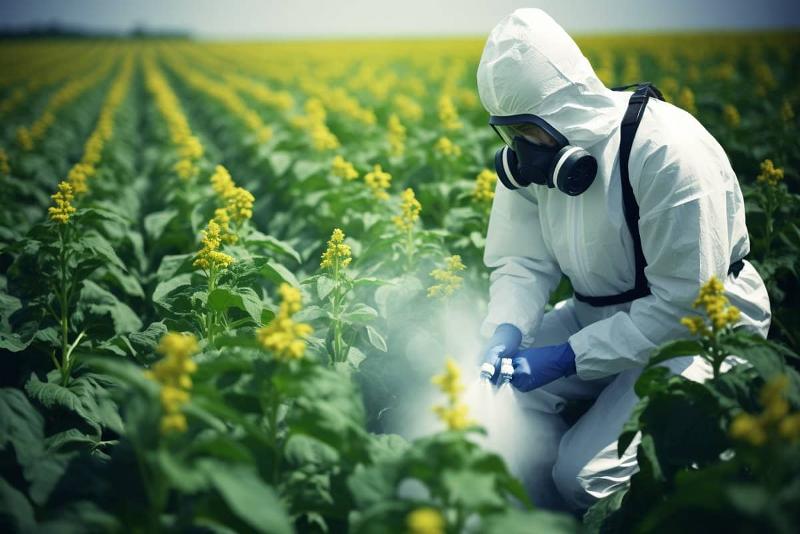In a groundbreaking study, researchers have uncovered a surprising connection between herbicides and adolescent brain function. Glyphosate and 2,4-D, two commonly used herbicides, have been found to have adverse effects on cognitive health in adolescents. This research sheds light on the potential worldwide implications of herbicide use and its impact on the developing brain. Read on to explore the fascinating findings and their implications for adolescent health.
Widespread Exposure to Herbicides
Discover the extent of herbicide exposure among adolescents and its implications.
Glyphosate and 2,4-D, two commonly used herbicides, have been found in the urine of 98% and 66% of adolescents, respectively. This indicates a significant level of exposure among adolescents in agricultural regions. The high prevalence of herbicide presence raises concerns about the potential impact on their health and cognitive function.
Higher concentrations of 2,4-D have been associated with lower neurobehavioral performance in several areas, while glyphosate has been linked to decreased social perception. These findings highlight the need to further investigate the effects of herbicides on adolescent brain development and cognitive health.
Global Concerns and Implications
Explore the global implications of herbicide use and its impact on adolescent cognitive health.
With the widespread use of herbicides globally, particularly after the introduction of herbicide-resistant crops, there is growing concern about the potential impact on adolescent cognitive health. The increase in chronic diseases and mental health disorders among youth worldwide may be correlated with the exposure to neurotoxic environmental contaminants.
This study sheds light on the need for further research into the long-term effects of herbicides on human health. It calls for a comprehensive understanding of the impact of diverse chemicals on different stages of life, especially during critical periods of brain development in adolescence.
The Link Between Herbicides and Adolescent Brain Function
Uncover the surprising connection between herbicides and adolescent brain function.
Glyphosate, a nonselective herbicide used in various crops, and 2,4-D, a broadleaf herbicide, have been found to have negative associations with neurobehavioral performance in adolescents. Higher concentrations of 2,4-D have been linked to lower performance in attention and inhibitory control, memory and learning, and language.
Interestingly, glyphosate has been significantly associated with decreased social perception. These findings suggest that herbicide exposure may have a detrimental impact on various cognitive functions in adolescents. Further research is needed to fully understand the mechanisms underlying these associations.
The Rise of Herbicide Use and Its Impact
Examine the increase in herbicide use and its potential consequences for adolescent cognitive health.
Following the introduction of genetically modified, herbicide-resistant crops, the use of glyphosate and 2,4-D has significantly increased. These herbicides are now the most widely used worldwide. This rise in herbicide use raises concerns about the potential consequences for adolescent cognitive health.
Given the alarming increase in chronic diseases and mental health disorders among adolescents and young adults, it is crucial to investigate the role of environmental contaminants, such as herbicides, in these trends. Understanding the impact of herbicides on different life stages is essential for developing effective strategies to protect cognitive health.
Conclusion
In conclusion, the findings of this study highlight the potential impact of herbicides on adolescent brain function. Glyphosate and 2,4-D, two commonly used herbicides, have been associated with adverse effects on neurobehavioral performance in adolescents. The widespread exposure to these herbicides raises concerns about the long-term cognitive health of young individuals.
Further research is needed to fully understand the mechanisms underlying these associations and to develop strategies to mitigate the potential risks. It is crucial to prioritize the safety and long-term effects of chemicals used in agriculture and other industries to protect the cognitive development and overall well-being of adolescents.
FQA :
Are herbicides safe for adolescent health?
The findings of this study suggest that herbicides, such as glyphosate and 2,4-D, may have adverse effects on adolescent brain function. Further research is needed to fully understand the safety and long-term consequences of herbicide exposure on adolescent health.
What can be done to reduce herbicide exposure among adolescents?
Reducing herbicide exposure among adolescents requires a multi-faceted approach. This includes implementing stricter regulations on herbicide use, promoting organic and sustainable farming practices, and raising awareness about the potential risks associated with herbicide exposure.
Are there any alternatives to herbicides?
Yes, there are alternative methods to manage weeds and pests without relying heavily on herbicides. These include integrated pest management strategies, crop rotation, mechanical weed control, and the use of natural pest predators. Exploring and promoting these alternatives can help reduce the reliance on herbicides.

